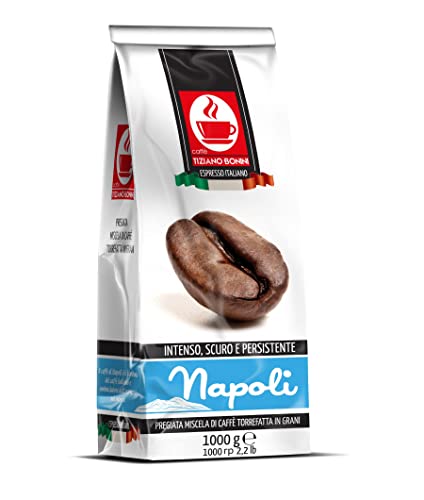What Is Coffee Beans Coffee And Why Is Everyone Talking About It?

What Are Coffee Beans?
Coffee beans are the seeds of a berry-like fruit or plant. They grow best in altitudes and climates similar to where they are cultivated and require certain levels of moisture, soil composition and many other elements to come to fruition.
Apart from flavor, they offer a variety of health benefits. Trigonelline is a component of coffee that, when roasted, turns into the nicotinic (a water-soluble vitamin B). It also contains phenolic acids including chlorogenic acid that helps lower blood sugar levels.
Origin
Most people know the appearance of a roasted bean like, but not many are aware that it was originally a berry. coffee beans wholesale suppliers is actually a seed that comes from the fruit of some species of Coffea plants. Most of the time, the berries split open and contain two beans, however in about 5percent of the harvested beans, one bean doesn't split. This type of bean is referred to as"peaberry "peaberry" and is usually hand-sorted and sold separately.
The "Bean Belt" is an area of the world located between the Tropics of Capricorn and Cancer is where the bulk of coffee is produced. Most countries produce coffee through several methods, each with its own distinct flavor and distinctive characteristics.
The exact history of coffee is a subject of disagreement, but it is believed that the first coffee plants were indigenous to Abyssinia which is now Ethiopia. The most well-known story is about a goatherd called Kaldi who noticed his goats screaming and exuberant after eating the bright red berries that were growing on nearby trees. Kaldi tried the berries and felt a feeling of exhilaration. Then, he began to introduce the drink to his community and its popularity spread. It gained acclaim throughout the Islamic world during the 15th and 16th centuries in spite of Islamic authorities declaring it to be intoxicating which was prohibited by the Qur an.
Flavor
The taste of coffee beans is affected by the area and species, the farming method and roasting method. Different flavors can be created by altering the temperature, duration and the pressure of roasting and the amount of air flow while it is roasting.
The kind of syrup used to flavor coffee beans may influence the taste. Flavored coffee is usually created by spraying the beans with oil-based flavoring agent after the roasting process, and letting them sit for 30 minutes to allow them to absorb the oils. The coffee beans flavored with flavor are then graded and sorted.
Infusing flavor into coffee beans is an easy and cost-effective method to alter the taste of coffee without altering its texture or color. The flavor of flavored beans is typically stronger than regular coffee. This is because the flavored coffee beans are soaked in flavoring syrup.
The taste of coffee is also affected by the spices that are added to it as it is stored. Whole spices like vanilla, cinnamon sticks and cocoa beans can be combined with freshly made coffee beans in order to give the beans a distinctive flavor. This is especially effective when the beans are kept in an airtight container.
Health Benefits
Coffee beans have been associated with numerous health benefits. These benefits include reducing the risk of Alzheimer's disease, the disease that causes Parkinson's and liver damage. Coffee beans contain caffeine, which is known to improve memory and cognitive performance. Coffee contains antioxidants which fight free radicals. The chlorogenic acid in coffee is believed to be a key ingredient in preventing chronic illnesses such as diabetes and heart diseases.
Consuming coffee beans has been linked with lower risk of developing type 2 diabetes. Research has also found that it may help lower the risk of Parkinson's disease, liver disease and cancers of the colon and colorectal tract. Coffee is linked to better brain function and could even help to prevent depression. According to several studies the presence of a certain acid in coffee can increase levels of dopamine and serotonin.
While eating coffee beans raw is a safe option for most people However, it should not be considered as a substitute to a healthy diet and exercise. The caffeine effect should not be over-exercised as it can cause anxiety, jitters, and insomnia. Additionally, if you suffer from acid reflux or an irritable stomach, you should avoid coffee beans.
Preparation
The coffee plant produces a drupe or fruit, that has two seeds (or beans) set flat against each other. Each fruit has an outer skin called the exocarp and an extremely thin layer of pulp on the top. The coffee seeds are removed from their covers, sorted, and cleaned before roasting. The beans can be processed in three different ways dry, moist, or a hybrid called wet-processed. The beans are then roasted, and can be ground, or left uncooked.
Variety of coffee bean varieties provide a variety of flavor profiles to complement a variety of drinks dessert, food, and recipes. The selection of a coffee bean for an individual recipe will depend on the desired flavor and texture.

When the coffee bean is fully grown it has a solid wax layer that shields its flavor and aroma compounds from the air. After grinding, however those compounds are exposed to the air and begin to lose their flavor over time. The temperature of the water is essential in brewing coffee to keep these flavors in check and preserve them. Pouring at a lower temperature will not release as much of the nascent flavors and pouring at a high temperature releases more. This is why it's vital to ensure that you are brewing your coffee at an perfect temperature for your taste. If you don't, the flavor can quickly turn bitter or bitter or.
